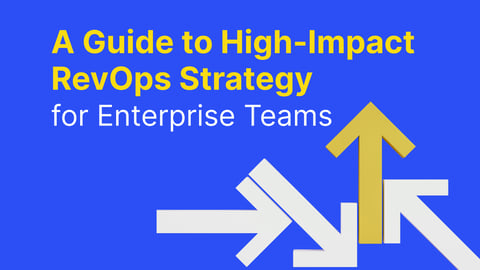How many times do you or your sales reps get this sort of message while selling?
And it can be for a number of reasons:
- Waiting for a new budget cycle
- They’re not ready internally to implement a new tool
- They’re waiting for a new product feature you’re working on
- Or maybe you’re just getting brushed off
And then the sales rep keeps the opportunity open, with a task to follow-up in 6 months, and another opportunity ends up in limbo – somewhere between a qualified lead and pipeline, but not being worked by anyone.
That’s why we recommend closing the opportunity, marking the Contact as Nurture, and starting a new opportunity when they are ready to have another sales conversation.
Risks of leaving opportunities open in pipeline
Sales reps like to hold onto these deals, because they’ve already invested time and effort into it. It’s the sunk cost fallacy. From their perspective, if it goes into a Nurture program, it could end up being reassigned to a different rep who could benefit from the work they’ve already put in.
When you keep long-term opportunities in open pipeline, re-engaging them looks something like this:
-
The opportunity gets left open in the reps pipeline
-
A task gets created to re-engage at the appropriate time (let’s say 6 months)
-
Wait 6 months
-
The rep reaches out to the prospect and attempt to re engage them
This is a terrible practice – it lacks visibility in reporting, it’s hard to hold people accountable to, and it’s designed to appease the sales reps – not to create a more consistent, predictable business.
You’re creating risks by leaving long term opportunities in open pipeline:
You’re inflating your pipeline coverage
While evaluating pipeline coverage, you look at conversion rates to calculate how much of your open pipeline should convert into revenue. If you have long term deals sitting there, that are more of a “kick the can down the road” type of opportunity than something real, it’s going to mess things up by making it look like you have more than you actually do.
You’re lengthening your sales cycle
It’s not uncommon for your buyers to go through multiple sales cycles before finally converting into a customer. But if you choose to keep one opportunity open, rather than creating new ones for each sales attempt, you won’t be able to get an accurate reading on how long your sales cycle is.
We have a customer that thought their sales cycle was 18 months, but once they started created new opps for each sales attempt, they found it was really 6 months – that’s a big difference. With this information they’ve improved their ability to forecast pipeline and plan campaigns knowing that leads coming in will be impacting revenue in 6 months rather than 18.
You’re not communicating with your qualified prospects
When opportunities are open in pipeline, it signals the other parts of your business to leave it in the hands of the sales rep because it’s actively being worked. From a systems point of view, it looks like an open opportunity or pipeline! That means your other tools, like Marketo, may remove them from receiving marketing messages.
That means Sales isn’t talking to them. Marketing isn’t talking to them. But maybe your competitor is.
3 months? 6 months? It’s a long time.
Think about how much has changed over the past six months at your own business. If you leave the opportunity open with a task for months from now, there are a lot of things that can change that might impact the rep:
-
The rep could leave – and no one would see the follow-up task
-
Territories could be changed and the opportunity no longer falls under the reps responsibility – and no one would see the follow-up task
-
Salesforce tasks can be a black hole– reps often miss or forget about them
However, if you close the opp, mark the contact as Nurture, and set a task for follow-up you’re going to see this opportunity in several places – like a closed lost re-engagement report!
Rethinking nurture
When a prospect says something like, “Check back in 6 months”, our recommended course of action goes something like this:
-
Close lose the opportunity, and mark the Contact as Nurture
-
Log a “Nurture reason” that is connected to a Nurture program
-
Run Nurture programs to keep the prospect engaged – ideally, these should be tied to the specific objection they had
-
Salesforce workflow to reassign the lead at the desired time
-
Create a new opportunity when you start a new sales conversation
Nurture is for when the prospect is a fit, but they aren’t ready to buy now. Nurture programs are largely misunderstood – like, they get a newsletter, so they are being nurtured. This is missing the point of Nurture programs entirely. The purpose is to get your prospects over their objections by the time they are ready to engage in the next sales attempt.
In this case, the Nurture reason could be something like, “Internal process changes as roadblock”, but you should have a choice of multiple reasons that a rep must select when moving something to a Nurture status.
How to define your Nurture reasons
Clear Nurture reasons prevent nurture from becoming a dumping ground for leads reps don’t feel like working. Similarly, Nurture should not be seen as a substitute for selling when a rep encounters an objection.
Clear nurture reasons provide your team with the context to create structured, value-add programs that prime leads to purchase from you when they are back in a buying cycle.
Good nurture reasons define why timing is wrong:
- Budget not available for 6+ months
- Product missing key feature for use case
- Prospect is re-evaluating internal processes
Bad nurture reasons are ambiguous, they don’t tell you why timing is wrong:
- No budget
- Not a fit
Use Nurture to keep leads flowing through your funnel
Far too many businesses are choosing to appease sales reps and allow them to leave long-term opportunities open in pipeline, so that they can have a chance to finish what they started. It’s a nice thing to do for your reps, but there are some cascading consequences that include:
- Inflating your pipeline coverage
- Lengthening your sales cycle
- Leaving the door wide-open for your competitors to swoop in
That’s why we suggest closing the Opportunity, marking the Contact as Nurture, and creating a net new opportunity when another sales attempt starts. And while the Contacts are in the Nurture stage, running strategic programs powered by Nurture reasons will significantly improve your chances to get them back into the funnel and re engaged.




